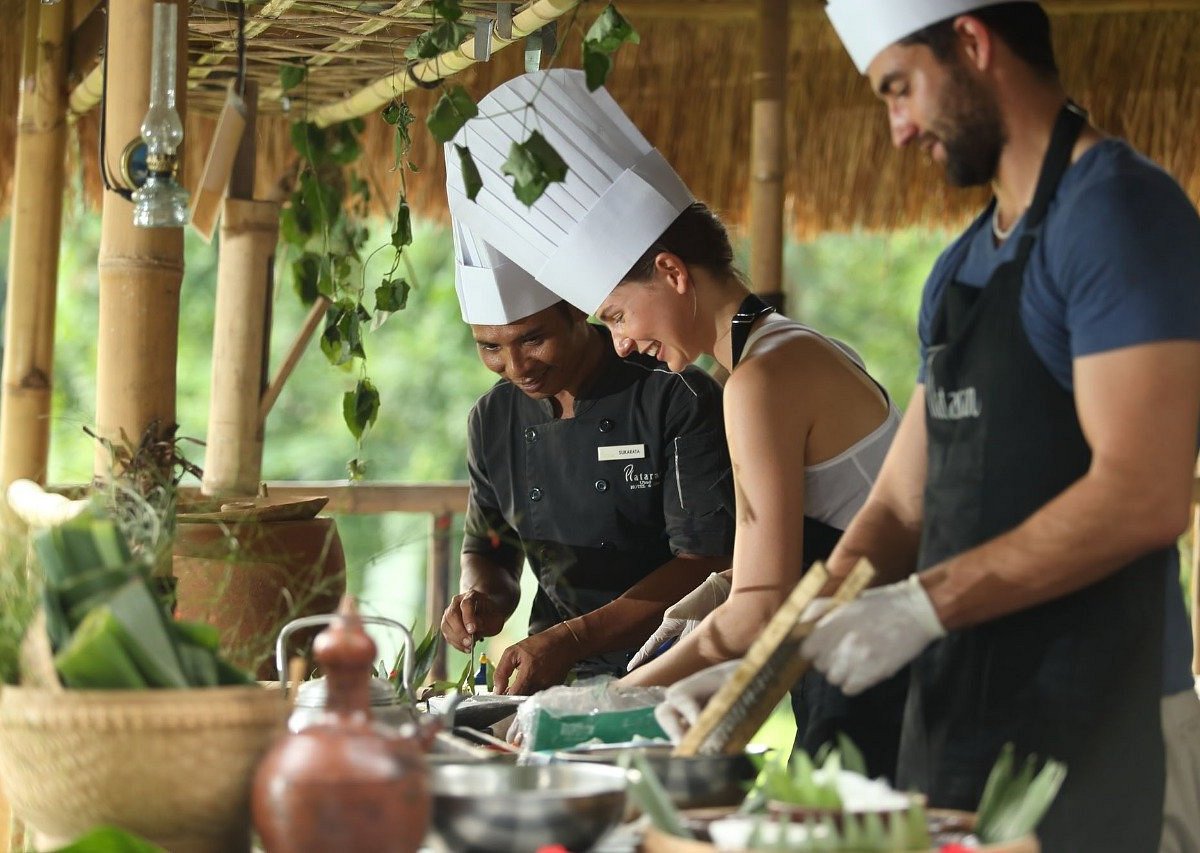Koh Samui, Thailand’s second-largest island, is a sublime destination that spans 228.7 square kilometers. It is part of a large archipelago with over 80 islands, including the renowned Ang Thong National Marine Park. From famous beaches like Chaweng and Lamai to culturally rich areas like Bophut and Nathon, Koh Samui provides a thrilling blend of tranquil experiences, vibrant activities, delectable cuisine, abundant shopping opportunities, exciting nightlife, and magnificent Samui luxury villas. It provides the perfect balance of pristine natural beauty, a wide array of delightful activities, and modern amenities, making it the ultimate tropical island destination.
While Koh Samui’s beaches and fun activities are usually the first to capture visitors’ attention, its rich and diverse culinary landscape is not to be missed. As with any destination, food is a universal language that connects people from different backgrounds and is also a key element in creating memorable experiences. By exploring local cuisines, travelers gain a deeper understanding of a destination’s cultural identity, fostering greater respect and appreciation for its people and heritage.
Traditional Samui Ingredients and Flavors

Koh Samui’s rich culture and gastronomy add a deeper dimension to its natural beauty. The island’s culinary scene is a blend of tradition, creativity, and innovation, with elements and flavors that captivate the senses. Southern Thai cuisine is famous for its extreme use of spices, but Samui’s recipes are generally less spicy. Koh Samui curries often have spicy yet milder flavor profiles compared to mainland Surat Thani’s fiery curries. Moreover, its proximity to the ocean means fresh seafood is a key element to most Samui dishes. The island also has an abundant coconut supply, so coconut-based curries, beverages, and desserts are highlighted as signatures in many local restaurants.
Cultural Significance of Food in Koh Samui
Koh Samui’s cuisine reflects the nation’s rich heritage. Beyond taste and flavor, food is a vital aspect of the community, reflecting the island’s centuries-old practices. As the only Southeast Asian country that Western nations have never colonized, Thailand retained its identity and vibrant traditions while keeping up with the times. It has the perfect blend of the old and the new, which is also reflected in the nation’s cuisine. Each dish tells a charming story and connects visitors to the island’s colorful history and long-lasting traditions.
International Influences and Culinary Innovations
Thailand’s food scene is a fascinating blend of local and international influences. In addition to indigenous techniques, Thai cuisine incorporates ingredients and cooking methods from neighboring countries like China, India, and Malaysia. In Koh Samui, restaurants offer a vast array of dining options with creative presentations and clever flavor combinations that elevate traditional Thai dishes. The island’s innovative chefs draw inspiration from its rich culinary heritage and local ingredients, pairing them with international elements and modern cooking techniques to craft contemporary dining experiences.
Dishes To Try in Koh Samui
One of the best ways to sample Koh Samui’s local dishes is by visiting its lively night markets and street food kiosks. Here, visitors can indulge in local favorites like satay and Pad Thai while savoring the aroma of fragrant Thai spices and the sound of sizzling woks.
Koh Samui also embraces the farm-to-table concept, with restaurants opting to source local produce, ensuring the freshness of the ingredients used in their dishes. When in Koh Samui, travelers should try signature Thai dishes like squid in coconut curry, kaeng tai pla (a type of Southern Thai curry), and kway tiao soup. For dessert, there’s kalamae, a sticky candy made from coconut cream, palm sugar, and glutinous rice flour. And, of course, sampling fruits like durian, rambutan, and mangosteen is a must-try.
Culinary Tourism Experiences

Numerous cooking classes are available in Koh Samui, allowing tourists to gain a deeper understanding of the island’s unique cooking methods, rich flavors, and the cultural importance of its cuisine. Street food and night market tours are also a great way to uncover Koh Samui’s culinary masterpieces. These tours offer the chance to enjoy the island’s bustling and energetic vibe while tasting a variety of local favorites.
In addition to these tours, Bangkok Airways, in collaboration with Bangkok Dusit Medical Services, recently unveiled a campaign called “SAMUI SAVOR, Beyond Boarding Pass, Beyond Healthy…Through Taste.” The project, which will run from May 20 to September 30, 2024, aims to promote local food and health tourism and support the local culinary industry in Koh Samui. Visitors can use their boarding passes to avail themselves of discounts at 42 participating restaurants around the island and have the chance to win domestic flight tickets.
Conclusion
Koh Samui’s gastronomy highlights a compelling harmony of flavors and techniques, where traditional Thai recipes meet ingenious craftsmanship. The island’s delectable food staples celebrate its cultural diversity, natural assets, and individuality, making every meal an epic journey that puts the spotlight on its dynamic culinary landscape.
Related Reading: Unveiling the Tantalizing Flavors of Koh Samui: A Culinary Journey
–
Featured Image by Thai Travel Center





